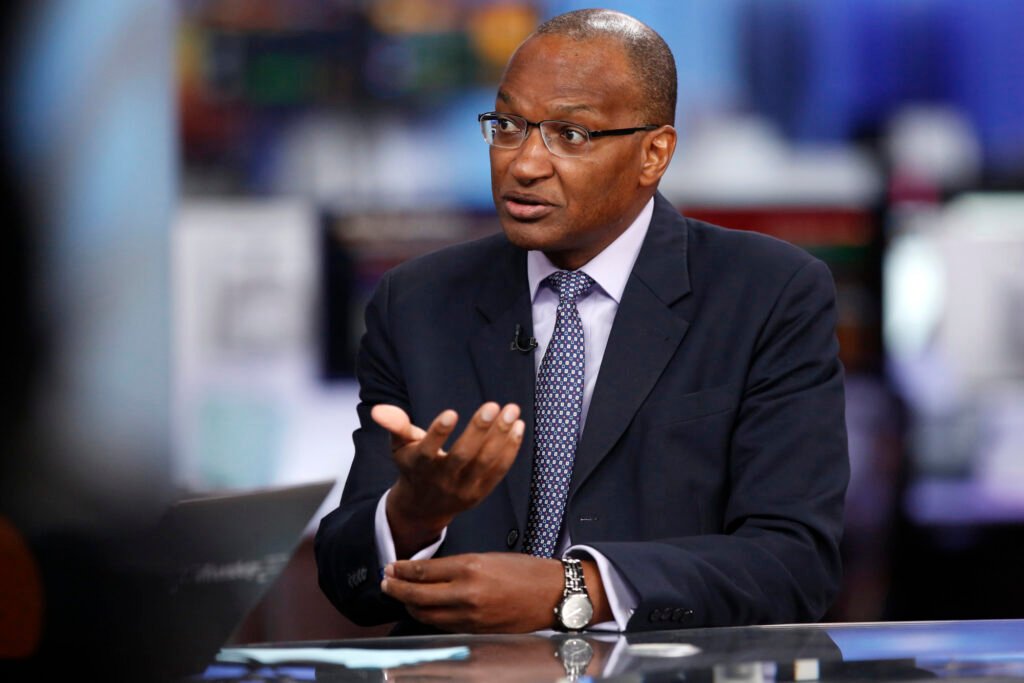Business
Jumping Into the sixth Technology Revolution

Technology Revolution: We’re in danger of passing up the absolute most significant open doors offered by the innovation upheaval that has quite recently started.
However many are absent to the signs and are in threat of watching this become a time of loud disturbance instead of the all-out rebellion expected to dispatch us into a green economy. What we require is certifiably not another turning wheel, yet textures woven with nanofibers that produce sunlight based power. To get that going, we need a profoundly reformulated method for getting markets, innovation, financing, and the job of government in quickening change. In any case, will we comprehend the open doors before they vanish?
Seeing the Sixth Revolution Technology for What It Is
We are seven years into the start of what examiners at BofA Merrill Lynch Global Research call the Sixth Revolution. A table via Carlotta Perez, which was introduced during an ongoing BofA Merrill Lynch Global Research lunch get-together facilitated by Robert Preston and Steven Milunovich, traces the upheavals that are sudden time permitting that lead to the one where we get ourselves.
1771: Mechanization and improved water wheels
1829: Development of steam for industry and railroads
1875: Cheap steel, accessibility of power, and the utilization of city gas
1908: Inexpensive oil, mass-created inward ignition motor vehicles, and general power
1971: Expansion of data and media communications
2003: Cleantech and biotech
The Vantage of Hindsight Technology
Glancing back at 1971, we realize that Intel’s presentation of the chip denoted the start of another time. Yet, in that year, this implied little to people watching Mary Tyler Moore and The Partridge Family, or tuning in to Tony Orlando and Dawn and Janis Joplin. Individuals would recall mankind’s initial steps on the Moon, opening relations among US and China, maybe the fruitful finish of the Human Genome Project to 99.99% exactness, and potentially the introduction of Prometea, the primary steed cloned by Italian researchers.
As per Ben Weinberg, Partner, Element Partners, “Each day, we see American organizations with promising advances that are unfit to send their items as a result of an absence of obligation financing. By filling this hole, the legislature will touch off the mass sending of inventive advancements, permitting advances extending from modern waste warmth to shaft mounted sun oriented PV to demonstrate their financial matters and addition validity in the obligation markets.”
Flying underneath our aggregate radar was the main floppy plate drive by IBM, the world’s first email sent by Ray Tomlinson, the dispatch of the primary laser printer by Xerox PARC and the Cream Soda Computer by Bill Fernandez and Steve Wozniak (who might found the Apple Computer organization with Steve Jobs a couple of years after the fact).
Times have not changed that much. It’s 2011 and a significant number of us face a comparative detach with the occasions happening around us. We are at what could be compared to 1986, a year on the cusp of the PC and the Internet on a very basic level changing our reality. 1986 was additionally the year that denoted the start of a noteworthy monetary move into new markets. Investment (VC) encountered its most generous money raising season, with roughly $750 million, and the NASDAQ was built up to assistance make a business opportunity for these organizations.
Driving this charge was Kleiner Perkins Caulfield and Beyers (KPCB), a firm that transformed specialized skill into perhaps the best IT investment firm in Silicon Valley. The IT model searched for a level of huge triumphs to balance misfortunes: a venture like the $8 million in Current, which was offered to Cisco Systems for $6.9 billion, could compensate for a ton of extraordinary thoughts that didn’t exactly make it.
Changing Financial Models Technology
In any case, the VC model that worked so well for data and broadcast communications doesn’t work in the new upheaval. Not exclusively is the financing side of the cleantech upheaval requests of greatness bigger than the last, this right off the bat in the game even investigators are attempting to see what’s to come.
Steven Milunovich, who facilitated the BofA Merrill Lynch Global Research lunch, commented that every unrest has an advanced stage which may keep going for up to 25 years, trailed by a usage period of another 25. Most cash is made in the initial 20 years, so genuine players need to get in right on time. However, the inquiry is: Get in where for what amount and with whom?
There is still market incredulity and vulnerability about the backbone of the perfect vitality upheaval. Milunovich gauges that numerous institutional financial specialists don’t put stock in a dangerous atmospheric division, and receive a “keep a watch out” mentality muddled by government impasse on vitality security enactment. For the individuals who are taking a gander at these business sectors, their inspiration ranges from worries about an oil shortage, matchless quality in the “new Sputnik” race, the shoring up of country security and – for a few – worry about the impacts of environmental change. Many take a gander at the individuals who see that we are amidst a major change by the way we produce and use vitality. Milunovich, for every one of these reasons, is “mindful temporarily, bullish on the long.”
The Valley of Death Technology
Each new innovation carries with it requirements for new financing. In the 6th transformation, with spending needs multiple times those of IT, the test is moving from thought to model to commercialization. The Valley of Death, as an ongoing Bloomberg New Energy Finance whitepaper, Crossing the Valley of Death brought up, is the hole between innovation creation and business development.
However, a few financial specialists and approach creators keep on trusting that private capital will fuel this hole, much as it did the last. They express worry over the obligation from government projects like the upgrade reserves (American Recovery and Reinvestment Act) which have put millions in new advances in the spotless vitality part, just as helping states with reconstructing foundation and different activities Technology. They question why the customary financing models, which made the United States the world head in data innovation and broadcast communications, can’t be made to work today, if the Government would simply escape the way.
In any case, investigators from numerous sides of financing accept that administration support, or some likeness thereof, is fundamental to push extends ahead, in light of the fact that cleantech and biotech undertakings require an a lot bigger contribution of capital so as to get to commercialization. This hole influences commercialization, but on the other hand is influencing interests in new advancements, in light of the fact that money related premiums are worried that their speculation probably won’t see fulfillment – get to business scale.
How new advancements are fundamentally unique in relation to the PC upset.
Foundation multifaceted nature Technology
This upset is exceptionally subject to a current Technology – however maturing – vitality foundation. Just about 40 years after the beginning of the broadcast communications unrest, we are as yet battling with a correspondences foundation that is divided, excess, and wasteful. Coordinating new wellsprings of vitality, and utilizing what we have, is a considerably progressively mind boggling – and increasingly essential – task.
Business
Inflation Concerns Prompt Central Bank of Kenya to Make Largest Rate Hike in 11 Years
Business
Taxes Pain In Uhuru Kenyatta’s Final Sh3.3trn Budget

President Uhuru Kenyatta’s last budget will put his successor under pressure to raise Sh350.7 billion in fresh profit to apply his preferred systems, setting up Kenyans for advanced taxation and aggressive pursuit of duty cheats.
Treasury Cabinet Secretary Ukur Yatani will Thursday autumn reveal to MPs how he’ll fund the record Sh3.31 trillion budget for the time starting July in a ritual that will take place two months before due to the August 9 bean.
The front- runners in the 2022 presidential choices — opposition leader Raila Odinga and Deputy President William Ruto — have promised fresh social spending.
Formal sector workers, landlords, pots and ordinary consumers are headed for an anxious autumn as the Treasury targets Sh2.024 trillion in levies, a growth of20.9 percent on the current Sh1.67 trillion.
Judges anticipate the sharp growth in specific parts of the duty earnings to come with strong growth or advanced duty rates.
Top on the list of targeted profit sources is income duty, whose fresh profit is anticipated to rise by Sh179.4 billion to Sh997.3 billion, motioning a possible advertisement of new duty measures on workers’ hires and company earnings.
Mr Yatani also plans to collect Sh107.6 billion further from Handbasket to Sh548.7 billion and excise duty, targeting particulars like beer, cigarette and pop, which is projected to rise Sh37.6 billion to Sh297.2 billion.
Similar situations of profit growth are generally only possible in an terrain of robust profitable growth that increases the number of workers, yields advanced hires for those formerly working and raises commercial gains.
The volition is a rise in the duty rate.
The Kenyan frugality is on a recovery mode from Covid-19 profitable rigors, which started layoffs, pay cuts and business closures.
The Treasury had earlier blazoned a new crackdown on fat duty evaders as part of its budget for the time starting July, setting the stage for trip bans, means snap and deactivation of Particular Identification Figures ( Legs).
Duty experts said Mr Yatani will likely raid easy targets similar as alcohol consumers and smokers for further levies from beer, wines, spirits and cigarettes despite the goods being subordinated to advanced levies every October in line with average affectation for the antedating fiscal time.
Capital gains duty is a duty on the profit realised on the trade of an asset similar as trade of stocks, bonds, precious essence, real estate, and property.
The government is trying to raise finances for development systems to goad growth and produce jobs, but judges say duties similar as capital levies could discourage foreign investors.
Mr Kenyatta’s administration has made changes to the capital earnings duty during its near 10- time term after it was dropped in themid-1980s to attract foreign and original investment. In 2014, Mr Kenyatta inked into law a five percent capital earnings duty.
Experts also anticipate a clampdown on the fat duty cheats, high-net-worth professionals and dealers, to recover overdue levies in sweats to raise the public earnings.
















